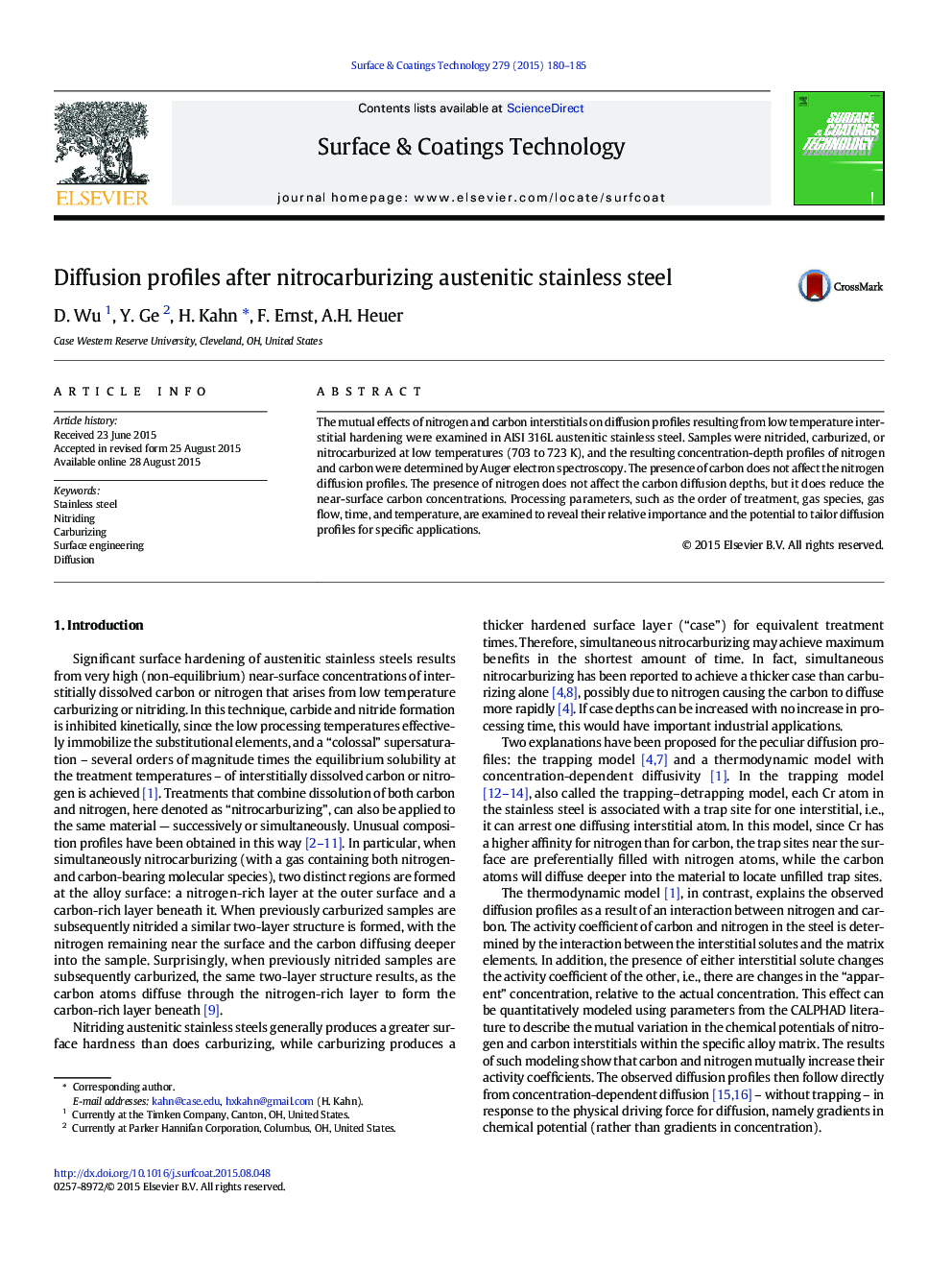| Article ID | Journal | Published Year | Pages | File Type |
|---|---|---|---|---|
| 1656830 | Surface and Coatings Technology | 2015 | 6 Pages |
Abstract
The mutual effects of nitrogen and carbon interstitials on diffusion profiles resulting from low temperature interstitial hardening were examined in AISI 316L austenitic stainless steel. Samples were nitrided, carburized, or nitrocarburized at low temperatures (703 to 723Â K), and the resulting concentration-depth profiles of nitrogen and carbon were determined by Auger electron spectroscopy. The presence of carbon does not affect the nitrogen diffusion profiles. The presence of nitrogen does not affect the carbon diffusion depths, but it does reduce the near-surface carbon concentrations. Processing parameters, such as the order of treatment, gas species, gas flow, time, and temperature, are examined to reveal their relative importance and the potential to tailor diffusion profiles for specific applications.
Related Topics
Physical Sciences and Engineering
Materials Science
Nanotechnology
Authors
D. Wu, Y. Ge, H. Kahn, F. Ernst, A.H. Heuer,
